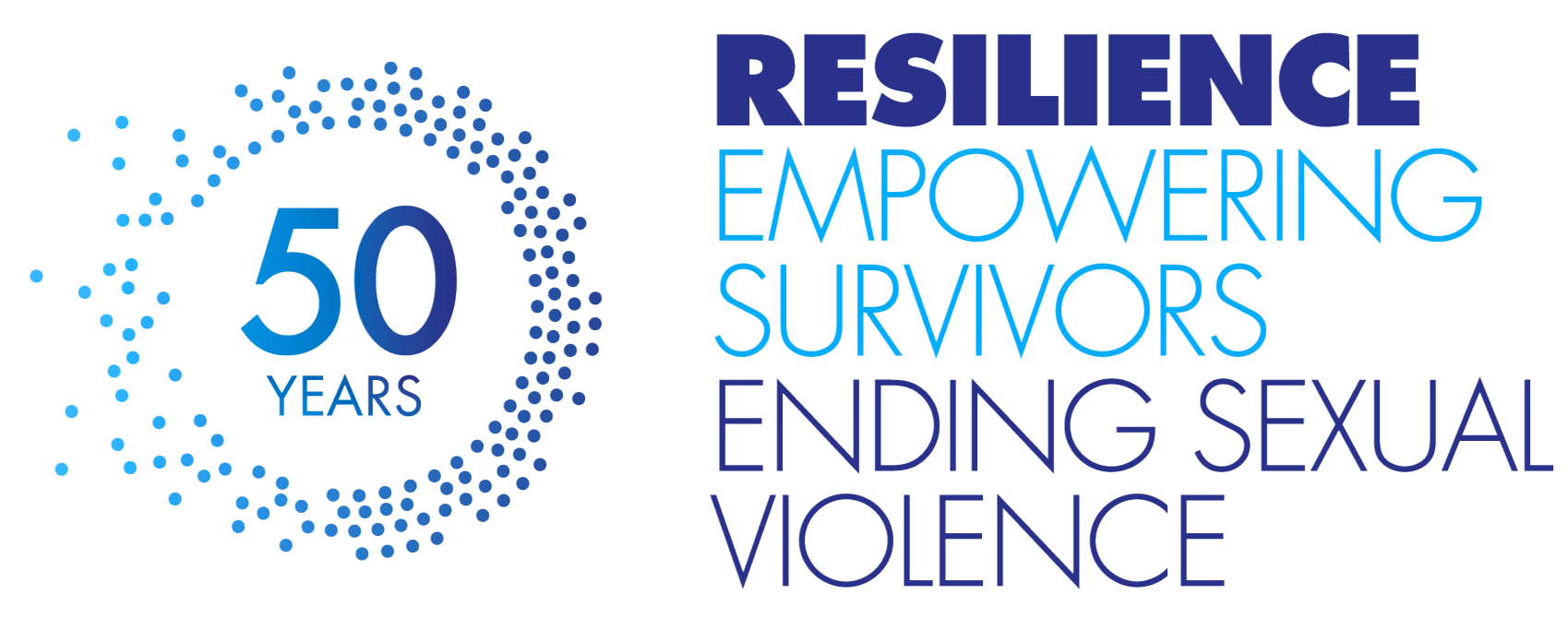Meet Victoria Herrera, one of Resilience’s Art Therapists in the Trauma Therapy Department.
Continue to read our interview with Victoria.

When did you start working at Resilience? When did you first start working with survivors?
I started working at Resilience a little over a year and a half ago in April of 2019. I always say that my path with the organization continuously crossed before officially joining the trauma therapy team –– I like to think I was meant to work here. I remember being in grad school at the Art Institute of Chicago and hearing about Resilience and the incredible work that they were doing, and then I collaborated with my current supervisor, Jordan Ferranto, and two other staff members to body paint survivors. Then I went through Resilience’s volunteer program the year before I started working there to better support my clients and when I was ready to leave my job, I reached out to a contact I had there and it just happened that they were looking for a bilingual Trauma Therapist.
I first started working with survivors when I was in grad school and then worked for two years at an inpatient psych hospital. I had been running art therapy groups on all of the units with folks with a spectrum of chronic mental illnesses and substance use disorders and I started to notice that several of the patients were also survivors of sexual violence. They were being admitted to treat their symptoms but their complex trauma history was not being addressed; I think that’s why I decided to leave and apply to Resilience. That’s really what motivated me to make the shift and work with this population. I expanded my view of what trauma looks like and how society treats survivors, particularly survivors of sexual violence, due in part to the effects of rape culture and the systems within the medical industrial complex.
Can you tell us a bit about the art therapy that you do?
I provide art therapy to all of my clients ages 12 and up. I think people are sometimes hesitant to use art in therapy because there’s an expectation to create a masterpiece or to be really skilled, but with a trauma like sexual violence, having words to describe what happened to you is sometimes really difficult. So having something that is creative and body-based and can tap into your unconscious and can feel like it’s tapping into your imagination which is I think so crucial. In our therapy, we use watercolors and markers and crayons but also do sewing and body paint and puppets and keychains. It’s really anything that the client needs. I think blending both talk therapy and art therapy is super beneficial for survivors. I can’t imagine doing just one or the other.
What brought you to this work? What inspires you to keep working with survivors?
I think my own healing journey brought me to this work and it continues to be the reason that this is what I truly should be doing with my career and my life. I can’t imagine doing anything other than art therapy. Working with survivors like myself and having support and a safe space and the necessary tools to unpack my own trauma changed my life. It really inspires me to show up for my clients every day. The clients I work with are the reason I do this because healing looks so different for each individual and I believe that everyone deserves the opportunity to work through their own trauma. And although this work is really difficult, it’s also really beautiful. People do recover, heal and get better –– post-traumatic growth and vicarious resilience exists, and that’s a really incredible thing to witness.
How did you talk to family and friends about your work with Resilience? Are there any conversations that stand out to you?
When I tell my friends or family what I do, sometimes I get reactions like, “Oh, wow, that must be so heavy. I can’t imagine what you hear.” I think it’s interesting to describe what trauma therapy is and what art therapy is. Once you get somebody to view trauma as an event that has this ripple effect, they realize that I’m not just talking about the sexual violence every session, and I think it surprises folks that we’re treating the whole human. We’re complex beings, so we’re talking about childhood and family dynamics and friendships and healthy boundaries and also how this trauma impacted an individual. So I don’t think a lot of folks always understand what trauma therapy is. I think some of the most interesting conversations are changing the misconception of who a survivor can be. We have to challenge that initial belief that it’s typically someone who identifies as femme and that it happened at a party or whatever type of stereotype. I never give details but I do like to encourage folks to think of survivorship and how a survivor could be anybody. And I like to shed light on the fact that healing is possible and that my clients are okay after therapy. Sometimes they go back to therapy and that still means that they’re okay and that they just need more support.
What’s one of your favorite memories from working at Resilience?
I think one of my favorite memories was going once a week to Cameron Elementary School and running what I called our “tween survivor” therapy group. It was a 12-year-old, a 13-year-old and a 14-year-old. I really loved going into a school setting every week and I love working with kids. There’s so much pressure in that age group and they’re feeling insecure, and on top of that these girls were survivors. I enjoyed creating a space for them where they weren’t necessarily friends before the group but there was this shared sense of, “you’re a safe person for me now.” It was really beautiful to witness and to foster that rapport between them. I also really love when people are hesitant to work with art materials and then watching them gravitate towards a certain material and telling me why it feels good and what they like about it. I just love curiosity.
Is there someone who embodies Resilience who has had a strong influence on you?
It’s probably each of my clients. I honestly end every session with a deep appreciation for this work and an amazement at the strength and power of each individual that I work with. Surviving a trauma where the site of the violence is your body is indescribable and I’m always so amazed at the individuals I work with, whoever they are and however they identify. It’s like we all have this innate light inside of us, and witnessing somebody dig in deep and sit next to their grief while they’re working through their trauma and finding the light again is indescribable. I am so honored to do this work.
How has your work changed during COVID?
My work has dramatically changed. We’re only seeing folks through a virtual platform and rapport-building looks different. I used to ask my clients, “Do you want some tea? How was your day? Do you want to hang your coat up?” All those little things where you can read body language when you’re in the same space and some trust is just starting to form. But I do think that being able to provide virtual therapy and support groups for folks that have physical disabilities or a chronic mental illness or are living in a low-income area and couldn’t afford to get to therapy has been really transformative. And that feels really incredible. It’s accessible, it’s affordable, and the support groups that we’re doing right now, especially during this time of isolation, are critical. I’m about to start a therapy group for survivors that are in high school and it’s really amazing that we can virtually connect to these high school students. That’s really exciting right now.
I really miss my coworkers, though. That’s been a huge thing. I think what makes our work sustainable is having one another. I would leave a session, go to my coworker’s office, and we’d do something like pull like a tarot card or meditate or stretch together, go water our plants together. Just little things that grounded us. I really miss that. I can’t wait to be in that space again with them.
What are your dreams for the future with Resilience? What are you looking forward to?
I hope that Resilience continues to expand in Chicago and serve the survivors that aren’t accessing our care, support, and treatment right now. I think developing a South Side and a larger presence on the West Side would be really crucial to survivors. I think obviously with COVID things are very different right now but I hope that we continue some virtual therapy and virtual support because I think that could be really incredible for somebody for whom showing up in person isn’t an option and which might’ve deterred them from seeking support before. One good thing about 2020 is realizing that we can provide this virtual care.
I think expanding our offices and creating more of a presence in the Latinx community will also be important. I’m looking forward to continuing that work and supporting more Latinx folks. I also can’t wait to be back in the office. I miss seeing my clients in person and I miss the therapeutic magic of art making in person. I realize it’s 2020 and safety is our number one concern, but I can’t wait for the day that I can be back in the office.
